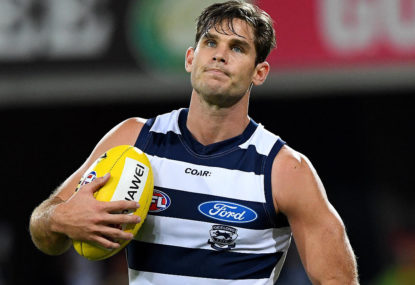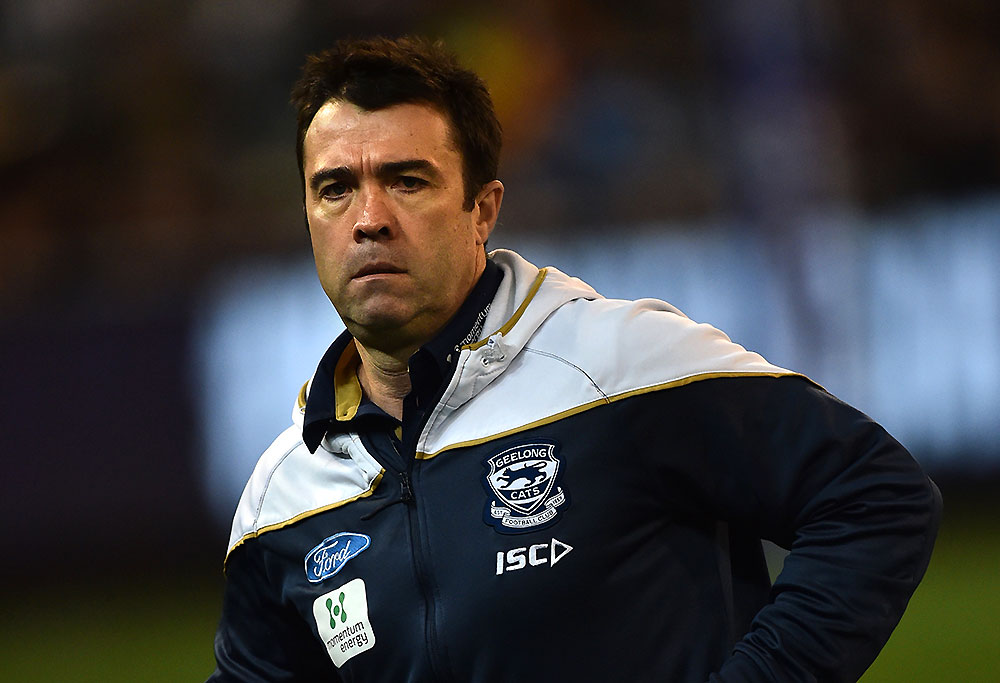The crucial cogs of AFL's Round 7: Which players need to be the difference makers?
We’re taking a look at one player from each team that needs to make a difference this week, starting with the ANZAC Day games.

It’s no secret that all cogs must be in the right place at the right time for teams to be the premiers of the AFL.
The Geelong Cats currently sit sixth on the ladder after ten rounds with a record of 6-4, and many concur that the list Chris Scott has to choose from in selection each week is destined to have strong threats come September.
However, Scott should follow suit of current Jock McHale medalist Damian Hardwick and play a remotely small forward line excluding tall Tom Hawkins.
Despite Hawkins being Geelong’s leading goal scorer the past seven seasons following his compelling 2011 Grand Final performance consequently resulting in an unlikely victory, Hawkins’ 2018 forward 50 presence has been misleading.
Kicking 16 goals in eight games, Hawkins has hardly proved promising when the Geelong’s captivating midfield find open space charging towards goal. Standing at 198cm and 101kg, Hawkins has appeared slow when matched up against more agile opponents.
The current race for the Coleman Medal demonstrates not only that the game has developed, but that key forwards are influencing the scoreboard more when size is replaced by agility.
Players such as Jack Darling, Jesse Hogan and Josh Caddy are affirming that the ability in the air and one-on-one are all as important as the follow-up work when the ball hits the ground.
While Hawkins can be damaging in the air and one-on-one when confidence is elevated, he has displayed his ground ball work ultimately leads to a rebound 50 for the opposition or a free kick given.
The Cats’ game style is built around ball movement and link up handballs driven from the back half, with two All-Australian candidates in Zach Tuohy and Tom Stewart providing run while playing somewhat of a key position.
All seems to be flowing perfectly until the Cats reach the last avenue to goal in Hawkins. The big forward is currently ahead in Geelong’s leading goal scorer to Daniel Menzel by a lone goal, a player who has played three fewer games.

(AAP Image/Julian Smith)
Hawkins is sitting second in the competition for frees against with a total of 21, at an aggregate of 2.6, while averaging four clangers per game.
In Geelong’s most recent loss at the hands of Essendon in Round 9, Hawkins was exposed by mobile defender Cale Hooker who was awarded for his performance matched up on Hawkins, compiling 11 marks and three rebound 50s.
Hawkins finished the game with three goals. Those scores were conceded in the final term when the game was all but over due to the Cats’ inability to get on the board, scoring just three goals in just three quarters of football.
In the Round 17 last year against the dangerous Hawthorn side, Scott was forced to play Brownlow medalist Patrick Dangerfield deep forward due to a leg injury.
This tactic resulted in Dangerfield kicking five crucial goals and taking charge in a win, while Hawkins ended the game with a sole behind.
He proved not to be an accident or a false match-up for Dangerfield and played deep instead of Hawkins in the semi-final against the arguably best team in the competition at the time in the Sydney Swans.
Placing Dangerfield forward was a bold move by coach Scott, but it paid off as his unit had four goals to his name at the conclusion of the first half and a substantial lead which proved to be too large for the Swans to conquer.
Hawkins finished with the final score of the game in red time to confirm he didn’t go goalless in a stunning forward line display.
Make no mistake, the decision to detach Hawkins from the Geelong best 22 would be a brave move, but as the saying goes – ‘fortune favours the brave’, and that fortune could be in the form of an awaited second premiership in eight seasons.